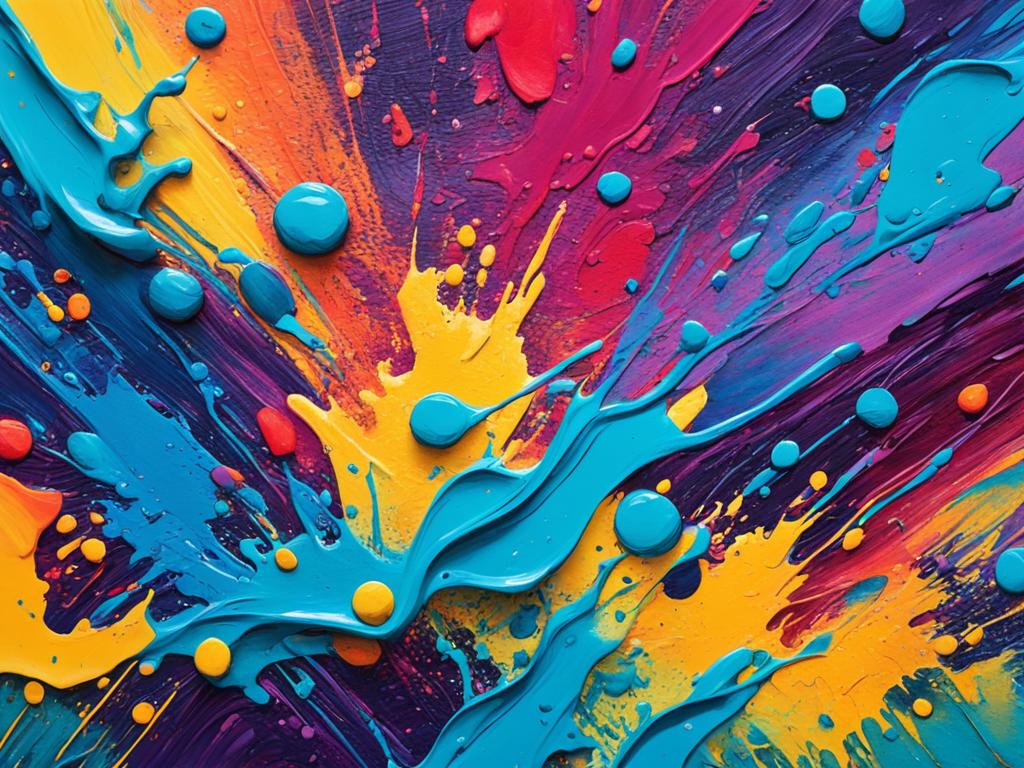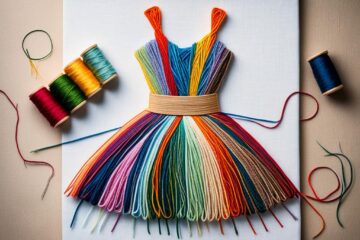Are you ready to get creative with painting? Acrylic painting is a vibrant world waiting for you to explore. Acrylics are a favorite among many artists today. They offer vibrant colors and a wide range of techniques and supplies to bring your art to life.
Why do artists all over the world love acrylics? They stand out from other painting mediums. Acrylics are fantastic for expressing your artistic vision.
Let’s take an in-depth look into acrylic painting. We’ll explore different acrylic mediums. Each one has its special properties to enhance your art. You’ll learn about various acrylic techniques. These range from bold strokes to delicate washes of color. You’ll also get tips on the supplies needed to make beautiful acrylic paintings. And how to choose the best materials for your style.
This article is for both new and experienced artists. It reveals the incredible possibilities of acrylics. So, let your creativity flow onto the canvas.
Introduction to Acrylic Painting
Ready to start your journey with acrylic painting? Acrylics are great for both new and experienced artists. They are vivid and flexible. This guide will teach you the basics and what makes acrylics special.
Acrylic paint is made of pigment and an acrylic polymer mix. It dries fast and forms a strong layer on your surface. Because it dries quickly, you can work faster with colors and techniques.
There are many mediums and additives you can use with acrylic paint. They change how the paint feels, looks, and dries. Mediums can slow down drying time, create shiny layers, or make the paint flow better. Additives like gels and pastes add thickness or textures.
Let’s explore some important techniques in acrylic painting. These methods will show you how to make your work stand out. Techniques like mixing colors, layering, and brush strokes help you create amazing art.
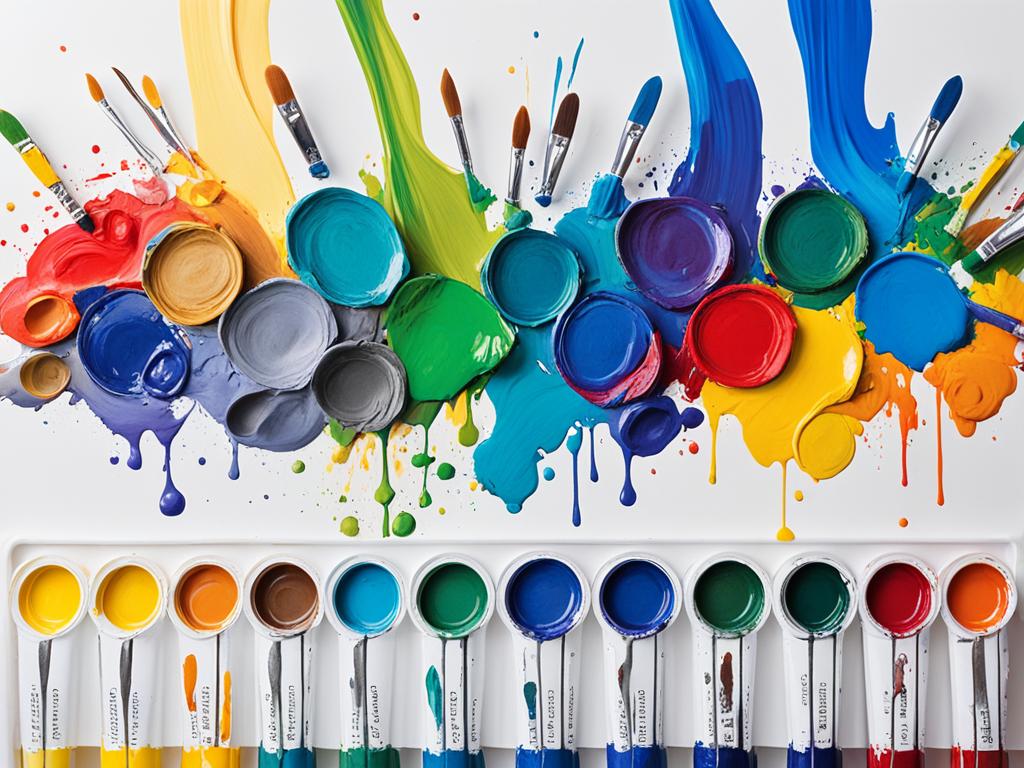
“What I love about acrylic painting is its endless options. From bright colors to soft details, acrylics let me imagine in ways no other paint does.”
Choosing the Right Acrylic Supplies
Having the correct acrylic supplies is key for your painting success. The type of colors you pick affects your work a lot. You can choose from tubes or bottles. Tubes are great if you like to mix your own colors. But, bottles work well if you prefer using colors as they are.
When choosing brushes, the right one matters just as much. There are many brush shapes and sizes. Each one is for a certain way of painting. What the brush is made of is also important. Synthetic brushes last long and keep their shape well with acrylic paint. They work for both tiny details and big strokes.
Think about the painting techniques you like. Round brushes are for delicate lines and blending. Flat brushes are best for covering larger areas evenly. Filbert brushes fit many needs, from blending to softening edges. It’s good to try different brushes to see what suits your style best.
Types of Acrylic Colors
| Type | Description |
|---|---|
| Tubes | Convenient for color mixing and achieving precise consistency. |
| Bottles | Ready-to-use colors that allow for immediate application. |
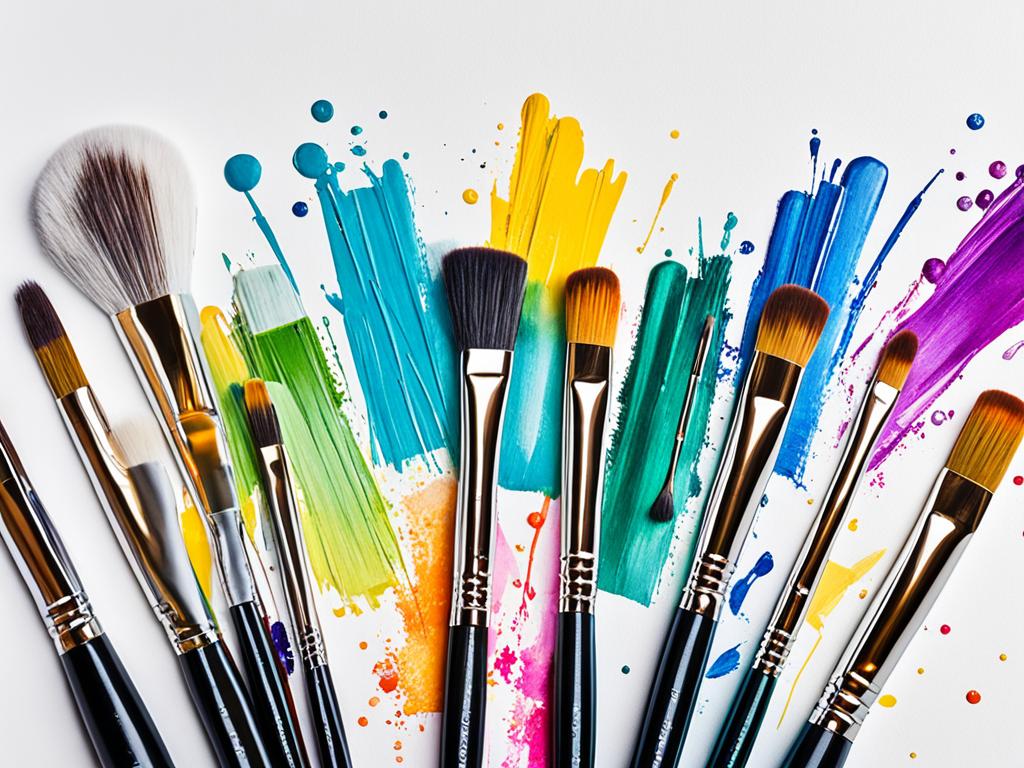
“Having the right acrylic supplies is essential for unlocking your creative potential and achieving desired results in your artwork.” – Acrylic Artist
Exploring Acrylic Techniques
Get ready to boost your painting skills with acrylic techniques. Acrylic paints allow you to make amazing textures and effects in your art. It’s great for new and skilled artists. Trying out these methods will make your art more creative and unique.
Layering is a key method in acrylic painting. It helps you add depth to your work. You start with a base layer, and continue by adding layers step by step, letting each dry in between. This is perfect for making landscapes or still lifes look more detailed and real.
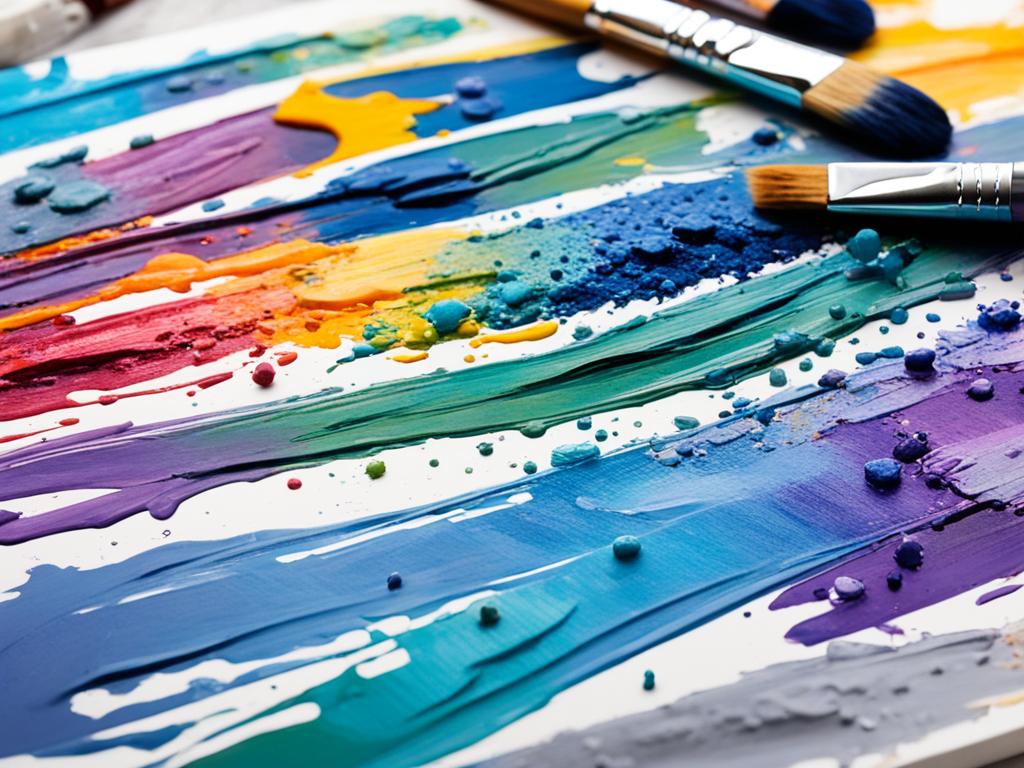
If you want to make your art glow, try glazing. It means adding thin layers of paint over a dry layer. The effect? Your art will have a shiny, colorful look. Mix different colors and techniques to get the right balance.
If you love texture, impasto is for you. Use thick paint straight from the tube with a knife or brush. This makes your art pop with a 3D feel. It works really well in landscapes or abstract art.
“Impasto allows me to add texture and dimension to my paintings, creating a sense of movement and energy in each brushstroke.” – Artist Emily Thompson
In dry brushing, you use a little paint on a dry brush. It lets you control how the paint goes on, and adds texture. This is perfect for painting faces or adding small details to your work.
Step-by-Step Acrylic Tutorials
Want to learn more about acrylic painting? Try these tutorials:
| Technique | Description | Example |
|---|---|---|
| Layering | Create depth and dimension by building layers of paint. | Click here |
| Glazing | Add luminosity and subtle color variations with transparent layers of paint. | Click here |
| Impasto | Add texture and three-dimensionality to your artwork. | Click here |
| Dry Brushing | Create controlled details and surface texture. | Click here |
By learning these techniques through tutorials, your art will stand out. Practice is how you get good at them and find your own style. Keep painting and pushing your creativity.
The Versatility of Acrylic Surfaces
Choosing the right surface for your acrylic painting is key for its look. You can paint on usual things like canvas or try out wood panels, paper, and more. Each material changes how the paint looks and lasts, letting you play with textures and colors.
Using various surfaces in acrylic painting can open up new avenues for creativity and expression.
Now, let’s explore some common acrylic surfaces:
1. Canvas:
Canvas is a top pick for many acrylic artists. It’s smooth and durable, working well for all skill levels. You can pick from different canvas weights and textures to match how you paint.
2. Wood Panels:
Wood panels give a strong base for acrylics. They can be smooth or have a bit of texture. Artists who like a firm surface or a natural look often choose wood panels.
3. Paper:
Paper is a budget-friendly choice for acrylics. It comes in many weights and types, perfect for trying out new styles. Just make sure you use paper made for acrylics to keep your art in good shape.
4. Unconventional Materials:
Acrylics work on lots of unusual things like metal or fabric. This is great for mixing media or creating unique art. But, these materials might need special prep for the paint to stick well.
It’s super important to prep your surface right before painting on it. Adding a layer of gesso or primer makes sure your painting lasts. This creates a solid base for your artwork.
Your choice of surface really affects your painting’s look. It’s all about what you want your art to say. Try different surfaces and methods to see what boosts your creativity and produces amazing art.
Now that you get how diverse acrylic surfaces are, let’s move on to cool techniques you can try with acrylic paints.
Conclusion
Acrylic painting is perfect for artists at any level. It opens the door to endless creative opportunities. Whether you’re just starting or have lots of experience, it’s a great way to show your artistic vision.
Acrylics dry fast and are very versatile. They let you try new things and express yourself. Their bright colors make your art lively and full of emotion.
You can paint in many ways with acrylics. There are styles like abstract or realism to choose from. They allow for bold strokes or subtle layers to achieve the look you want.
Acrylic painting is more than just a hobby. It’s a path to discovering your unique voice. So, get your paints ready, start painting, and watch your ideas come to life. Try acrylics now and delve into an art that offers endless possibilities.
